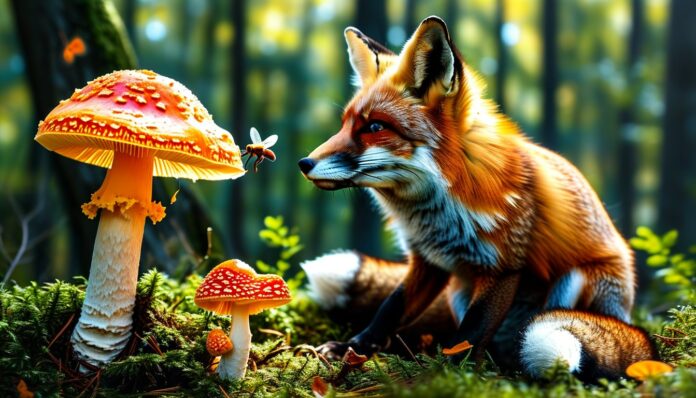Fly agarics are indeed very beautiful. Nature enthusiasts won’t overlook them in the forest when taking photos. These mushrooms, despite being poisonous, also serve a purpose in nature. They can be found quite easily in coniferous and deciduous forests, often under spruces and birches. While fly agarics are highly toxic, some animals still eat them. Why do they do this?
Deer, elk, foxes, bears, squirrels, domestic sheep and goats, as well as some other animals, consume small doses of fly agarics. They do this not to poison themselves, as almost all forest animals can distinguish between edible and poisonous mushrooms. They eat it in small amounts, needing only a small piece.
The reason for this is that in small doses, fly agaric acts as an antiseptic, helping the animal get rid of possible parasites and also serving as a good anthelmintic. This remedy is part of the forest animals’ medicine chest alongside other beneficial plants, allowing them to treat themselves with natural remedies.
Danger for humans
For humans, it’s a different story. Treating oneself with fly agaric is not an option. The mushroom is highly toxic, and when ingested, it has psychoactive effects. Poisoning cases are not common because its red color immediately signals danger, making it easy to distinguish from edible mushrooms.
A lethal dose is considered to be 15 average caps of fly agaric. In its raw and dried form, it possesses strong hallucinogenic properties, hence it was considered a sacred plant by Siberian shamans.
However, it causes severe side effects such as vomiting and nausea. To prevent this, Siberian tribes, instead of consuming the mushroom themselves, drank the urine of people who had already ingested fly agaric. This supposedly achieved the hallucinogenic effect without the side effects. After consuming such a drink, shamans purportedly saw the future and communicated with the spirits of deceased ancestors.
